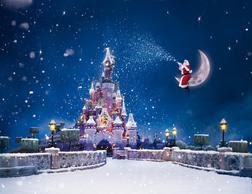Swamped in a smorgasbord of media choice, will today’s children ever know what it’s like to be sentimentally attached to a book?
I had so many ‘favourite’ books. Some I loved for their stories, some for the illustrations, others for what they’d meant as a gift, and one simply because I’d saved so long to buy it. (Another concept that might be lost on Generation Y: delayed gratification)
A book could become tatty with use, but you loved it no less. Perhaps even more, because the tat said “much used, much loved.” My Enid Blyton books were still with me in my 20s. Even non-bookish types have been known to secrete a dog-eared Little Golden Book in the back of a wardrobe. Of course, we romantically imagine that any children we might have, will love them as much as we did.
Certainly Enid Blyton’s Faraway Tree trilogy has stood the test of time (although I can never forgive the PC crew for changing the names of the children – as if modern kids couldn’t handle having a Dick and Fanny on the same page, puhleeeeze).
Eventually I shed most of mine, disappointed that my firstborn didn’t get the same buzz from The Naughtiest Girl as I did. I’ve blogged before about my general dismay that Milly Molly Mandy and the girls of the Chalet School are barely known to anyone under 40, but we can’t keep looking back ... right?
That’s what I tell myself today as I sort through a stash of my oldest books. It's finally time to discard “The All Colour Book of Horses”
That’s what I tell myself today as I sort through a stash of my oldest books. It's finally time to discard “The All Colour Book of Horses”
First published in 1972, the illustrations have an old-fashioned tone to them. Hell, it’s so dated, there’s even a ‘recent’ photo of Princess Anne competing on Doublet. I’m not into horses anymore. And yet ... gazing at the Arab mare and foal on the cover, I’m transported back to the Christmas when my heart rose to my throat with the excitement of receiving this gift. I remember how for years – yes, literally years – I would check in with this book, studying each photo, inventing a name for each horse.
This book has no relevance to my life now. And yet ... it’s so hard to bin it.
This book has no relevance to my life now. And yet ... it’s so hard to bin it.























